
Reef Safe Sunscreen
When you hear a Reef Safe Sunscreen, think of it as a mineral or physical sunscreen. This means they are simply sunscreens that do not contain Oxybenzone and Octinoxate and its family.
While there has been animal research saying that Oxybenzone and Octinoxate are linked to reproductive and hormonal disorders, these chemicals are still not known to cause harm when used as sunscreen. Still, the intake of tablets containing oxybenzone can cause damage to your body. This explains why the US Food and Drug Administration approved using oxybenzone in sunscreens and considers it safe but not as a drug.
So you see it is important to read and make decisions with your doctor but If I were to advise you I would say you do the things considered safe as you know there are still downsides to using the most recommended healthier sunscreens.
How to Identify Reef-Safe Sunscreen
To find a reef-safe sunscreen, look for products that are:
- Oxybenzone and Octinoxate-Free: These two chemicals are the main culprits in causing coral damage.
- Mineral-Based: Ingredients like zinc oxide and titanium dioxide are generally considered safe for reefs. They sit on top of the skin and reflect UV rays, rather than being absorbed.
- Non-Nano: “Non-nano” means that the particles are larger than 100 nanometers, making them less likely to be ingested by marine life.
- Biodegradable: Some sunscreens break down more easily in the environment, reducing their impact on marine life.
Top 10 Reef Safe Sunscreen
1. Cerave Hydrating Mineral Sunscreen SPF 50 Face Lotion

CeraVe Hydrating Mineral Sunscreen Face Lotion with Broad Spectrum SPF 50 is a 100%-mineral, oil-free sunscreen with titanium dioxide and zinc oxide that forms a protective barrier on your skin’s surface to help reflect the sun’s UVA and UVB rays without irritating sensitive skin. This makes it fall into the category of physical sunscreens.
Ingredients
Titanium Dioxide (9%) Zinc Oxide (7%) Ceramides, Niacinamide
Packaging and Design
The Cerave sunscreen comes in a squeeze tube packaging which allows precise dispensing, minimizing product waste.
Texture and Scent
The lotion has a non-greasy texture, making it easy to apply to the skin.
Results
Cerave’s Hydrating Mineral Sunscreen delivers on its promises. Beyond sun protection, users can expect their skin to feel supple and moisturized throughout the day.
2. Sun Bum Mineral SPF 50 Sunscreen Lotion

Sun Bum Mineral SPF 50 Sunscreen Lotion as a reef safe sunscreen is a lightweight, non-greasy formula that provides Broad Spectrum SPF 50 protection which helps protect skin from UVA/UVB rays.
Ingredients
Zinc Oxide 20.0%, water, cocos nucifera (coconut) oil, butyloctyl salicylate, diheptyl succinate, methyl
Packaging and Design
The Sun Bum Mineral SPF 50 Sunscreen Lotion comes in a recyclable, recycled plastic tube.
Texture and Scent
The lotion has a non-greasy texture, making it easy to apply to the skin.
Results
Sun Bum Mineral SPF 50 Sunscreen Lotion delivers on its promises.
3. Thrive Bodyshield SPF 50
 This natural mineral SPF 50 level sun protection is a reef safe sunscreen. With broad spectrum SPF 50 protection and no greasiness or white residue, there’s no downside to this popular sunscreen. It’s even water-resistant for active outdoor sun exposure.
This natural mineral SPF 50 level sun protection is a reef safe sunscreen. With broad spectrum SPF 50 protection and no greasiness or white residue, there’s no downside to this popular sunscreen. It’s even water-resistant for active outdoor sun exposure.
Ingredients
Zinc Oxide 23.5%, Water, Caprylyl Caprylate/Caprate1, Caprylic/Capric Triglyceride1, Coco-Caprylate1, Polyglyceryl-2
Packaging and Design
The Thrive Bodyshield SPF 50 comes in a recyclable, recycled plastic tube.
Texture and Scent
The lotion has a non-greasy texture, making it easy to apply to the skin.
Results
Thrive Bodyshield SPF 50 Sunscreen delivers on its promises.
4. Eucerin Sensitive Mineral SPF 50 Sunscreen

Eucerin Sun Sensitive Mineral provides Broad Spectrum SPF 50 UVA/UVB sun protection with 100% zinc oxide protection for a gentle, non-irritating formula that is water and sweat-resistant. Zinc Oxide protection helps to protect by reflecting and scattering UVA/UVB rays from the skin.
Ingredients
Zinc Oxide 24%, Water, C12-15 Alkyl Benzoate, Isopropyl Palmitate, Butyloctyl Salicylate, Ethylhexyl Pelargonate, Cetyl PEG/PPG-10/1 Dimethicone
Packaging and Design
The Eucerin Sun Sensitive Mineral sunscreen comes in a minimalist plastic tube.
Texture and Scent
Lightweight feel on skin with no heavy residue
Results
Eucerin Sun Sensitive Mineral Sunscreen is gentle, mild, and safe on sensitive skin
5. Neutrogena Sheer Zinc Mineral SPF 50 Sunscreen
 The Neutrogena Sheer Zinc Mineral SPF 50 Sunscreen delivers superior broad spectrum protection against burning UVB and aging UVA rays.
The Neutrogena Sheer Zinc Mineral SPF 50 Sunscreen delivers superior broad spectrum protection against burning UVB and aging UVA rays.
Ingredients
Zinc Oxide (21.6%), Water, C12-15 Alkyl Benzoate, Styrene/Acrylates Copolymer
Packaging and Design
The Neutrogena Sheer Zinc Mineral SPF 50 Sunscreen comes in a minimalist plastic tube.
Texture and Scent
It feels lightweight feel on the skin with no heavy residue.
Results
Neutrogena’s Dry-Touch technology helps the sunscreen dry with a non-greasy, lightweight finish.
Frequently Asked Questions On Reef-Safe Sunscreen
1. What is reef-safe sunscreen?
Reef-safe sunscreen is formulated without chemicals known to be harmful to coral reefs and marine life. These products typically avoid ingredients like oxybenzone and octinoxate, which have been linked to coral bleaching and damage to aquatic ecosystems. Instead, reef-safe sunscreens use mineral-based ingredients like zinc oxide or titanium dioxide that are less likely to harm the ocean environment.
2. Why is using reef-safe sunscreen important?
Using reef-safe sunscreen is crucial for protecting coral reefs and marine life. Traditional chemical sunscreens can wash off in the water, contributing to coral bleaching and harming marine organisms. By choosing reef-safe products, you help preserve these delicate ecosystems and contribute to the overall health of our oceans.
3. How can I tell if a sunscreen is reef-safe?
Look for labels stating “reef-safe,” “reef-friendly,” or “ocean-friendly.” Additionally, check the ingredient list for harmful chemicals like oxybenzone, octinoxate, and octocrylene. Certified reef-safe sunscreens typically use non-nano zinc oxide or titanium dioxide as their active UV filters.
4. What ingredients should I avoid in sunscreen to ensure it’s reef-safe?
To ensure your sunscreen is reef-safe, avoid products containing the following ingredients:
- Oxybenzone
- Octinoxate
- Octocrylene
- Homosalate
- PABA (Para-Aminobenzoic Acid)
- 4-Methylbenzylidene Camphor
- Parabens These chemicals are known to contribute to coral bleaching and environmental damage.
5. What are the active ingredients in reef-safe sunscreens?
Reef-safe sunscreens primarily use mineral-based active ingredients such as:
- Non-Nano Zinc Oxide: Provides broad-spectrum protection and is gentle on the skin and environment.
- Non-Nano Titanium Dioxide: Another effective UV blocker that is less harmful to marine life.
6. What does “non-nano” mean in the context of reef-safe sunscreens?
“Non-nano” refers to particles larger than 100 nanometers, which are less likely to be ingested by marine organisms and less likely to penetrate the skin. Non-nano particles are considered safer for both the environment and human health.
7. How do I properly apply reef-safe sunscreen?
Apply reef-safe sunscreen generously to all exposed skin areas 15-30 minutes before sun exposure. Make sure to rub it in thoroughly. Reapply every two hours, or more frequently if swimming, sweating, or towel-drying.
8. Can reef-safe sunscreen provide the same level of protection as regular sunscreens?
Yes, reef-safe sunscreens can provide effective broad-spectrum protection against both UVA and UVB rays. Look for products with SPF 30 or higher for adequate protection. They work by creating a physical barrier that reflects UV radiation away from the skin.
9. Is reef-safe sunscreen suitable for all skin types?
Yes, reef-safe sunscreens are suitable for all skin types. Mineral-based formulas are generally well-tolerated and less likely to cause irritation, making them a good choice for sensitive skin. However, if you have specific skin concerns, it’s always best to check the full ingredient list and test the product on a small area first.
10. Will reef-safe sunscreen leave a white cast on my skin?
Some reef-safe sunscreens may leave a slight white cast due to the mineral ingredients, especially non-nano zinc oxide. However, many modern formulations are designed to minimize this effect and blend more seamlessly into the skin. Look for products labeled as “sheer” or “transparent” to reduce the likelihood of a white cast.
11. Are reef-safe sunscreens water-resistant?
Many reef-safe sunscreens are formulated to be water-resistant, offering protection for up to 40 or 80 minutes while swimming or sweating. Check the product label for specific water resistance claims and remember to reapply as directed.
12. Can I use reef-safe sunscreen on children?
Yes, reef-safe sunscreens are generally safe for children. Their gentle, mineral-based formulations are often recommended for young, sensitive skin. Ensure you choose a product suitable for your child’s age and always follow the application instructions.
13. Where can I buy reef-safe sunscreen?
Reef-safe sunscreens are available at many health and beauty stores, outdoor retailers, and online platforms. Look for them in sections dedicated to natural or eco-friendly products. Some popular brands include Badger, Blue Lizard, and Raw Elements.
14. How do chemical sunscreens affect coral reefs?
Chemical sunscreens containing oxybenzone and octinoxate can contribute to coral bleaching by disrupting coral reproduction and growth, and increasing susceptibility to bleaching. These chemicals can also damage the DNA of marine organisms and disrupt endocrine systems, leading to broader ecological impacts.
15. Are there any regulations regarding the use of reef-safe sunscreens?
Yes, some regions have implemented regulations to protect coral reefs by banning sunscreens containing harmful chemicals. For example, Hawaii, Key West (Florida), and parts of Mexico have banned sunscreens with oxybenzone and octinoxate. Check local guidelines when traveling to areas with coral reefs.
Conclusion
When you choose a reef-safe product, you’re contributing to the preservation of marine life and the health of coral reefs. Whether you’re snorkeling in tropical waters or just enjoying a sunny day at the local pool, consider using one of these eco-friendly options. Your skin and the ocean will thank you.
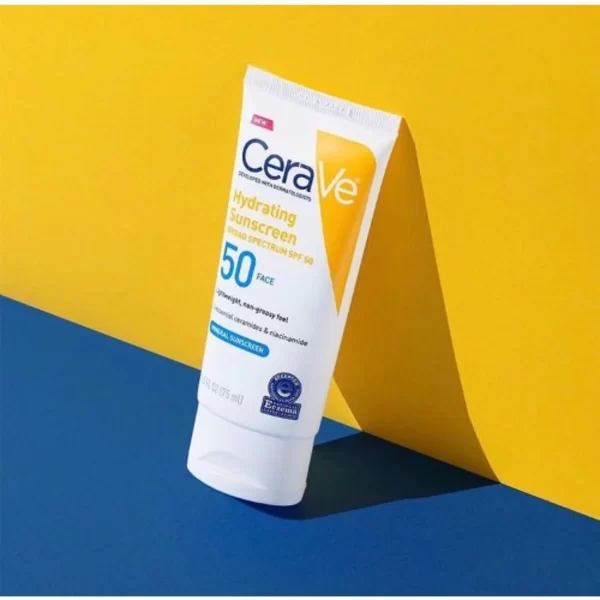
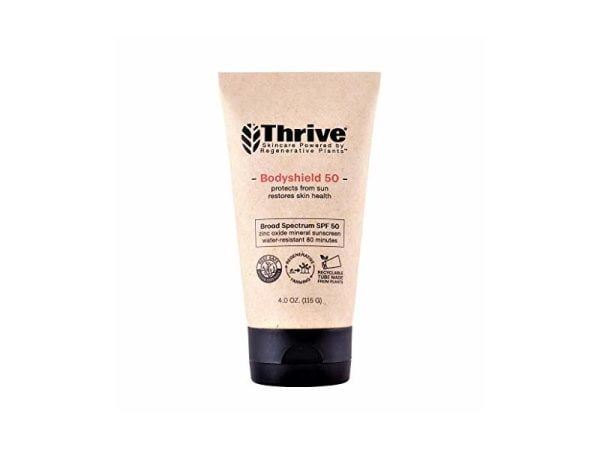 This natural mineral SPF 50 level sun protection is a reef safe sunscreen. With broad spectrum SPF 50 protection and no greasiness or white residue, there’s no downside to this popular sunscreen. It’s even water-resistant for active outdoor sun exposure.
This natural mineral SPF 50 level sun protection is a reef safe sunscreen. With broad spectrum SPF 50 protection and no greasiness or white residue, there’s no downside to this popular sunscreen. It’s even water-resistant for active outdoor sun exposure.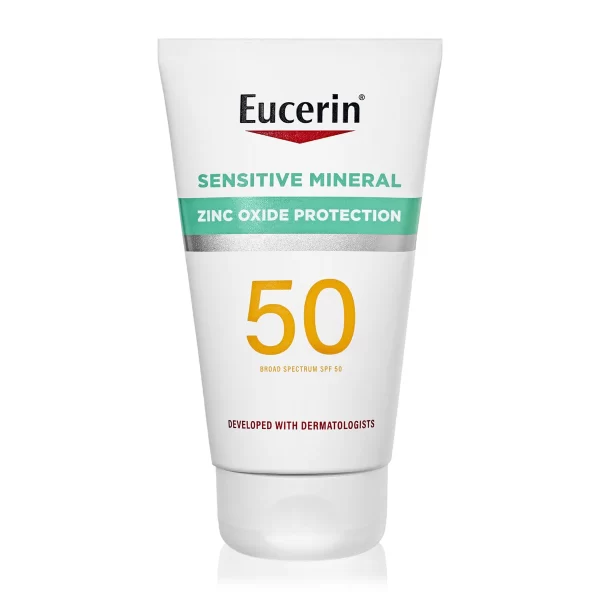
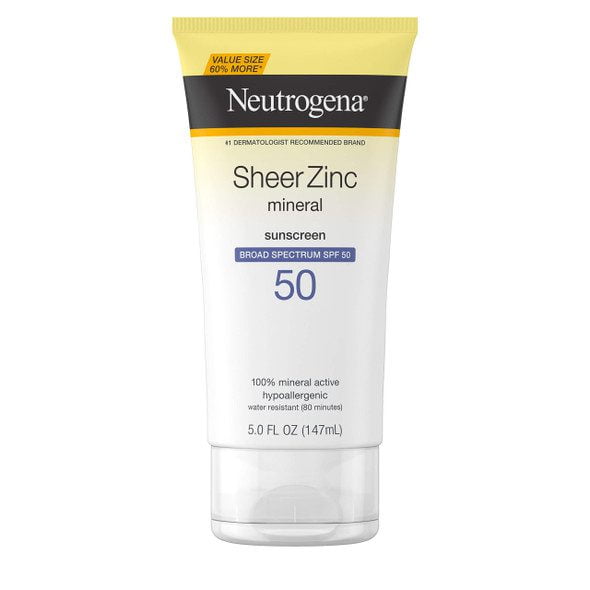 The Neutrogena Sheer Zinc Mineral SPF 50 Sunscreen delivers superior broad spectrum protection against burning UVB and aging UVA rays.
The Neutrogena Sheer Zinc Mineral SPF 50 Sunscreen delivers superior broad spectrum protection against burning UVB and aging UVA rays.

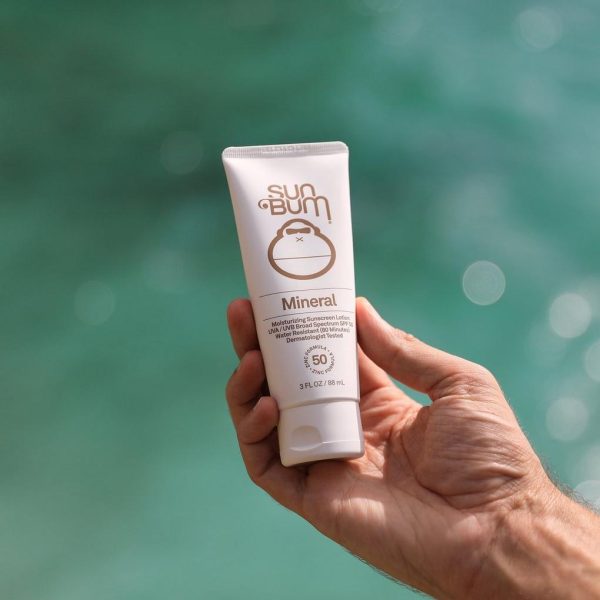
Leave a Reply